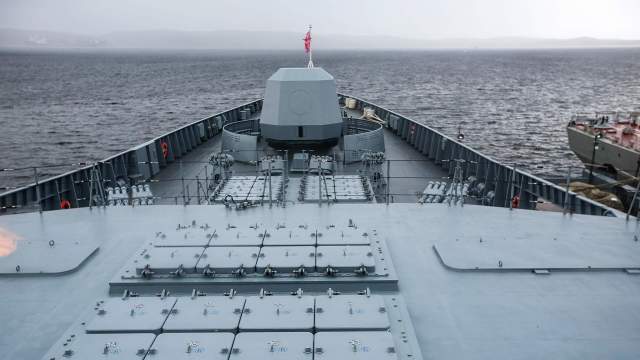New Russian ships will be able to use the Poliment-Redut air defense system as a dual-use complex
The arsenal of the Russian Navy includes new ammunition for the anti-aircraft system. They are potentially capable not only of intercepting aerial threats, but also of destroying objects on the water and on the ground. Missile tests on surface targets were successful, they are currently being finalized to hit targets on the ground, sources told Izvestia in the Russian Defense Ministry. According to experts, this will significantly enhance the firing capabilities of modern warships.
It is expedient and effective
Test launches from the Poliment-Redut anti-aircraft missile system on surface targets were carried out successfully, sources told Izvestia in the military department. Now the missiles of this complex will replenish the arsenal of Russian corvettes of projects 20380 and 20385, as well as frigates of the 22350 series and will be able to be used for different types of purposes — according to the situation. According to the interlocutors of the publication, the missiles are currently being refined to defeat ground targets.
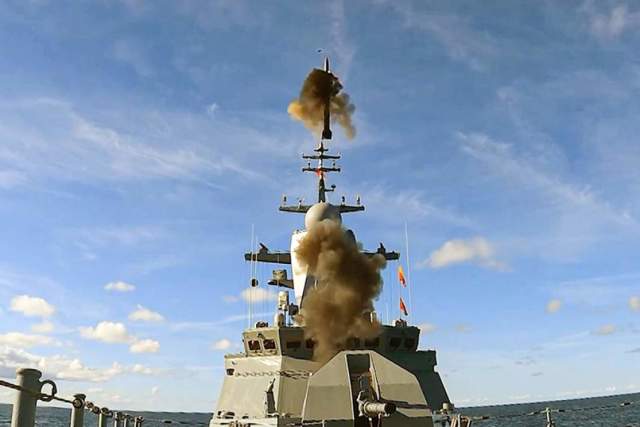
The corvette "Stoyky" of the Baltic Fleet during practical missile firing at surface and air targets from the sea-based vertical launch anti-aircraft missile system "Redut" in the Baltic Sea
Image Source: Photo: TASS/Ministry of Defense of the Russian Federation
In Soviet times, ammunition for naval anti-aircraft systems was originally developed with the ability to fire at sea and land targets, so we are talking about returning to old traditions, Dmitry Kornev, editor of the Militaryrussia portal, told Izvestia.
— They did it in Soviet times. And already in recent history, when developing new air defense systems, they focused on working on air targets," the expert explained. — But in order to make a dual-purpose anti-aircraft missile, you just need to work with the control system. And the modern level of technology development quite allows it. It is expedient and effective. It turns out that the same complex can be used in different situations, for sea and land targets. And it doesn't require some gigantic refinement. It's just that the "Poliment-Redoubt" was brought to a normal state as an anti-aircraft complex, and it was also completed as a dual-use complex.
For all types of goals
The Poliment-Redut air defense system was created on the basis of the S-350 Vityaz land air defense system and is designed to intercept aircraft, helicopters and cruise missiles.
The marine air defense system includes a radar station (radar) "Poliment" with four phased antennas. It is responsible for detection and targeting. Anti-aircraft missiles are placed in vertical launch installations on the bow of the ship.
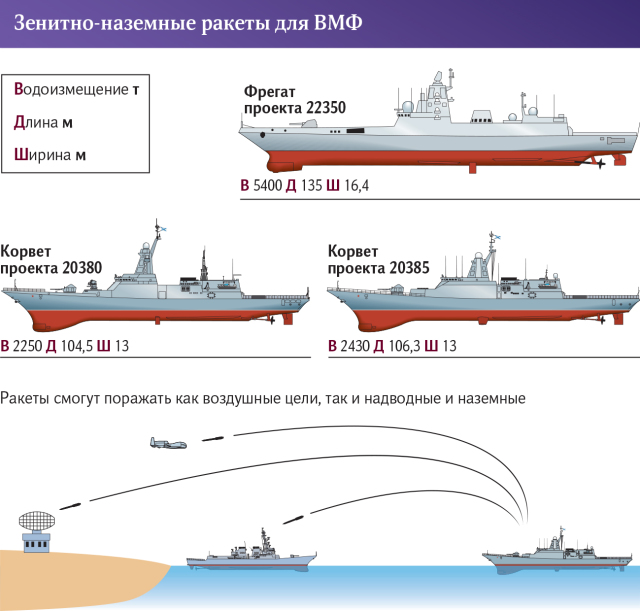
The launchers of the complex consist of modules of four or eight cells each. It can fire medium-range missiles 9M96E (up to 50 km) or long-range 9M96E2-1 (up to 150 km). It is also equipped with 9M100 short-range missiles.
They are made according to the scheme with a load-bearing body, lattice rudders and a solid-fuel engine with a controlled thrust vector. This significantly increases their maneuverability. The missiles hit targets at an altitude of 5 m to 8 km, moving at speeds up to 3,600 km/h.
The most modern in the fleet
The corvettes of the project 20380 of the "Guardian" type are the first ships of the far sea zone, completely created in the post—Soviet period. They are being built at two factories. From the "Northern Shipyard" ships are sent to serve in the Baltic and Black Seas, and the Amur Shipyard makes ships for the Pacific Fleet (TOF). At the same time, initially the production of corvettes for the Pacific Fleet was accompanied by difficulties — the first representative of this series was built for 11 years.
To date, nine Project 20380 corvettes are in service. "Watchful", "Quick-witted", "Brisk" and "Persistent", built at the "Northern Shipyard", serve in the Baltic Fleet. "Perfect", "Loud", "Hero of the Russian Federation Aldar Tsydenzhapov" and "Sharp", created at the Amur Shipyard, are part of the Pacific Fleet.
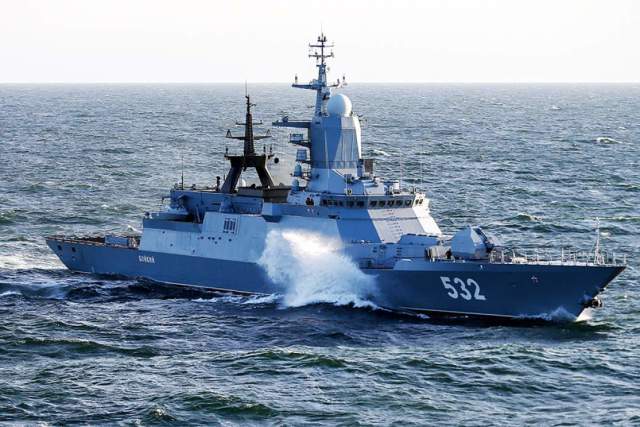
Corvette "Boyky" of the Russian Navy during the Russian-Chinese naval exercises "Maritime Interaction-2017"
Image Source: Photo: TASS/Vitaly Nevar
"Grozny" and "Brave" are also being built for the Pacific Fleet, they should be transferred to the Navy in 2024 and 2026. In May of this year, the Black Sea Fleet included the Mercury corvette built at the Severnaya Shipyard, and the Strict One is being completed.
At the ceremony of raising the Naval Flag and receiving the Sharp corvette into the fleet, which took place on September 14 in Vladivostok, the commander-in-chief of the Navy, Admiral Nikolai Evmenov, said that the ship would strengthen the potential of the surface component of the Pacific Fleet and would adequately perform tasks as part of groups in the sea and ocean zones.
All these ships are designed using stealth technology. Their superstructures are made of composite materials, which seriously reduces visibility in the radar range.
The corvettes have an automatic control system installed, which allows transmitting any information from one ship to another in real time. This helps to effectively distribute goals between several crews.
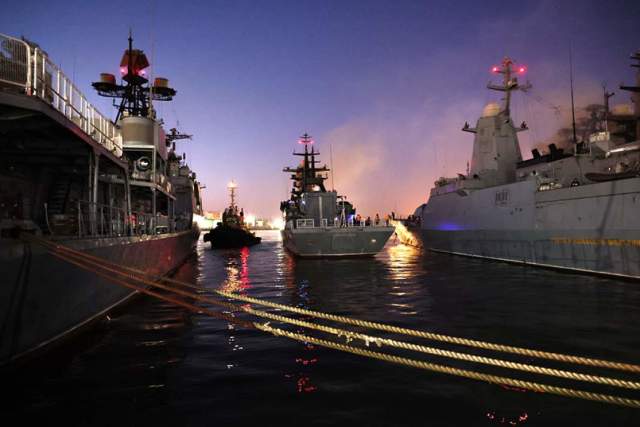
Corvettes "Hero of the Russian Federation Aldar Tsydenzhapov" and "Perfect" (from right to left) in the Golden Horn Bay
Image source: Photo: TASS/Yuri Smityuk
The Minotaur-M hydroacoustic station with a towed antenna effectively detects enemy submarines. The Paket-NK complex can be used to destroy both enemy torpedoes and submarines.
The corvettes of Project 20380 carry an impressive arsenal. It includes the anti-ship complex "Uranus" with X-35 missiles. They are also armed with a universal 100-mm A-190 artillery system capable of firing up to 80 rounds per minute. To protect against attacks from the air, "Sharp" received a long-range anti-aircraft complex "Redut", and on its stern there is a hangar for the Ka-27 helicopter.
Roman Kretsul
Alexey Ramm
